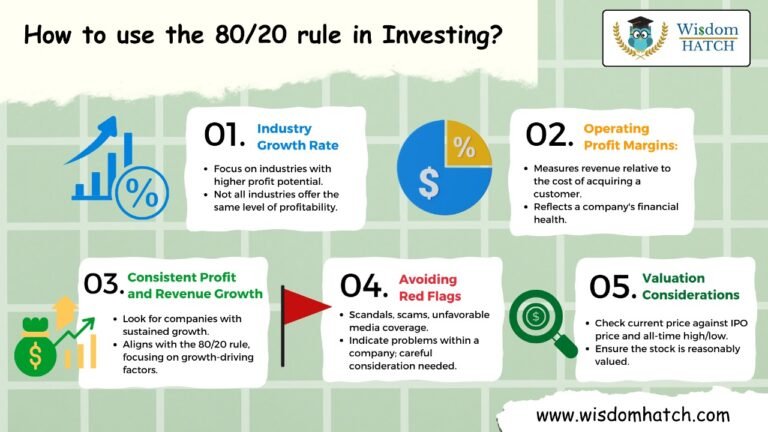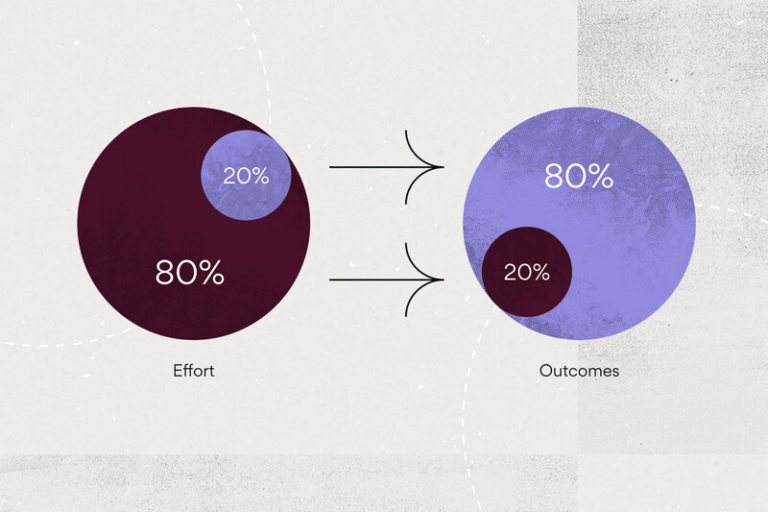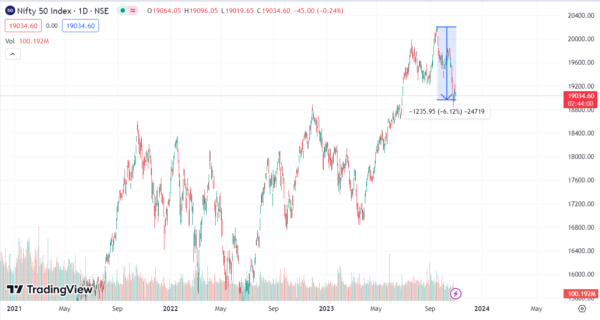Mastering the 80/20 Rule for Better Decision-Making in Investing and Beyond

In the fast-paced world of finance and investments, making the right decisions can be challenging. Whether you are an experienced investor or just starting out, understanding a fundamental concept known as the 80/20 rule can be a game-changer.
This rule, also known as the Pareto Principle, can help you achieve better results with less effort in various aspects of life, from investing to risk mitigation and beyond.
In this comprehensive blog, we will delve into the 80/20 rule, breaking down its applications and exploring how it can be a powerful tool for making informed decisions.
Here’s what we’ll cover:
● Understanding the 80/20 Rule (Pareto Principle)
● Applying the 80/20 Rule to Investing
● Deciphering the 80/20 Principle in the Stock Market
- Choosing the Right Stocks
- Risk Mitigation through Nifty 50
● Extending the 80/20 Rule to Real Estate Investments
Understanding the 80/20 Rule (Pareto Principle)
The 80/20 rule, also known as the Pareto Principle, is a concept that states that roughly 80% of outcomes result from 20% of causes.
In simpler terms, it implies that a small portion of effort or input often yields the majority of the results [1].
This principle has been applied to various fields, including economics, management, and decision-making.

Management consultants often use the 80/20 rule to streamline their efforts and focus on tasks that have the most significant impact.
It’s not just about having more knowledge; it’s about structured thinking and focusing on the most critical elements that drive results.
Applying the 80/20 Rule to Investing
Structured Thinking vs. Lack of Knowledge
Successful decision-making isn’t just about having knowledge; it’s about structured thinking. People often lack structured thinking because they aren’t taught how to think effectively.
The 80/20 rule offers a way to overcome this deficiency by helping individuals focus on the critical 20% of information that drives 80% of the results.
Mitigating Investment Risks
Investing can be fraught with uncertainties and risks. Many people are afraid of making investment decisions due to fear of losing money. This fear arises from a lack of analytical abilities.
However, the narrator suggests that risk mitigation is possible by gaining knowledge and improving analytical skills. One way to mitigate risk is through the use of insurance, such as health and life insurance
Deciphering the 80/20 Principle in the Stock Market
Analyzing Market Trends
In the stock market, it’s common for investors to panic when the market experiences a downtrend.
As it stands, the market has corrected by around 7% from it’s peak [2].

This has led to a wide variety of questions on how investors should react.
So let’s try to apply the 80-20 principle here.
A 5% to 10% fall is not considered significant, and a major correction is only around 15% to 20%.
Since Oct 2021, the market has been consolidating and has given almost no returns.
A market almost never consolidates to go down, it’s always preparing for an up move.
Analyzing market trends through the 80/20 lens can help individuals make more informed decisions.
This simple analysis gives you more confidence to stay invested!
Choosing the Right Stocks
Follow the 80-20 principle and try to avail 80% information about the stock by focusing on the main 20%.
Avoid absorbing news blindly.
Industry Growth Rate
When selecting stocks, understanding the industry’s growth rate is essential.
Focus on industries with higher profit potential, as not all industries offer the same level of profitability.
Profit Margins
Profit margins are a crucial factor in stock selection. The operating profit margin, which measures revenue relative to the cost of acquiring a customer, is a key indicator of a company’s financial health.
Consistent Profit and Revenue Growth
Successful stock selection involves identifying companies with consistent profit and revenue growth.
Look for businesses that demonstrate sustained growth, as this aligns with the 80/20 rule’s principle of focusing on factors that drive results.
Avoiding Red Flags
Investors are cautioned against investing in companies with red flags. Red flags include issues like scandals, scams, or unfavorable media coverage.
These negative aspects can indicate problems within a company and should be carefully considered before making an investment.
Valuation Considerations
Always consider the stock valuation. Check the current price against the IPO price and all-time high low price.
This evaluation is crucial to ensure that the stock is reasonably valued.
Risk Mitigation through Nifty 50
Nifty 50 as an easy and low-commission investment option, highlighting that it aligns well with the 80/20 rule.
The 80/20 rule simplifies risk management by offering an approach that focuses on the most critical factors affecting investment performance.
It encourages a more straightforward and practical approach to managing risk in the stock market.
If you are a serious investor and are looking for advanced techniques with a focus on better returns, join our Wisdom Hatch community where we give live and timely updates on the Stock Market.
Extending the 80/20 Rule to Real Estate Investments
Applying the 80/20 Rule in Real Estate
The 80/20 rule is not limited to the stock market but can also be applied to real estate investments.
The rule can simplify and improve decision-making in the real estate sector.
For eg:
- Instead of doing your due diligence for the plot and its background, take a bank loan.
- This will lead to the Bank doing the diligence for you on the plot.
- Use paperwork extensively to decreased your overall risk
Conclusion
In a world where information overload can paralyze decision-making, the 80/20 rule stands as a beacon of simplicity and effectiveness.
By understanding that 80% of results come from 20% of efforts or focus, we can streamline our decision-making processes and achieve better outcomes with less stress and confusion. Whether you are investing in the stock market, considering real estate investments, or making life’s crucial decisions, the 80/20 rule can be your guiding principle.
Remember, knowledge alone is not enough; structured thinking is the key to success.
Mastering the 80/20 rule can be your secret weapon for making more informed, efficient, and successful decisions in the complex world of finance and beyond. So, embrace this rule, apply it to your life, and watch as your decision-making skills transform for the better.
- The 80/20 Rule (Pareto Principle) states that 80% of outcomes result from 20% of causes, and it can be applied in various fields, including investing.
- Structured thinking is crucial for successful decision-making, and the 80/20 rule helps focus on the critical 20% of information that drives 80% of results.
- Mitigate investment risks through knowledge and analytical skills, and consider using insurance for risk management.
- Applying the 80/20 principle to the stock market involves analyzing market trends, choosing the right stocks, and avoiding red flags.
- Nifty 50 is a low-commission investment option that aligns well with the 80/20 rule for risk management in the stock market.
- The 80/20 rule can also be applied to real estate investments, simplifying decision-making and reducing overall risk.
- Embrace the 80/20 rule for more informed, efficient, and successful decision-making in finance and other areas of life by focusing on the most critical factors.
MUST know BEFORE you become an Airbnb host
Medium Article Preksha Chand edit post MUST know BEFORE you become an Airbnb host Medium Article Preksha Chand edit post MUST know BEFORE you become an Airbnb host Medium...
Make more money from your property: Short-term rental [Airbnb]
Medium Article Preksha Chand edit post Make more money from your property: Short-term rental [Airbnb] Medium Article Preksha Chand edit post Make more money from your property: Short-term rental...
GOA Airbnb Laws: What Hosts Need to Know [2024]
Medium Article Preksha Chand edit post Make more money from your property: Short-term rental [Airbnb] Medium Article Preksha Chand edit post Make more money from your property: Short-term rental...





